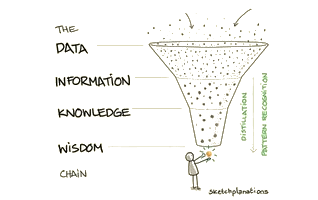
OEE, the yardstick for measuring improvement
OEE does not tell us if we have a problem. OEE helps us to analyze the problem and make improvements. Overall Equipment Effectiveness (OEE) is best used to measure the performance and analyze the losses on a particular piece of equipment so that they can (1) be understood and (2) be addressed. At the top level, it measures good output against planned good output, using the planned production hours and ideal cycle time. That’s a measure of how the equipment is performing. When there is a problem, it provides the breakdown of availability, performance, and quality to help you hone in on the problem.
OEE Calculation:
OEE (%) = Availability rate x Performance rate x Quality rate x 100
The critical value of OEE is that it helps you understand and analyze the 6 big losses. Think of it as an improvement measure, not a KPI. The idea is to measure OEE on your constraint piece of equipment or bottleneck and work to elevate that. Focus on improving that asset, using OEE to check and see whether you’re doing the right things, and then move on. Ultimately, you’re going to measure OEE on everything because the whole concept behind lean is to remove your constraints. Every time you elevate one constraint it means that something else in the value stream becomes the constraint. That’s where the concept of kaizen comes into play. OEE is a leading indicator that can point you in the direction where improvement is needed; then it becomes a lagging indicator to tell you whether or not you did the right thing.
OEE dos and don’ts…
- Never try to multiply OEE rates across multiple machines, lines, or processes. You can’t calculate an aggregate OEE for a plant, only an average. And while the average OEE for a plant can give you a rough idea of equipment performance (an overall low OEE is usually an indicator of poorly maintained assets), it doesn’t really tell you a whole lot more than that.
- Consistently measure OEE, doing so will identify loss patterns that are reducing the effectiveness of your machines. OEE data is most valuable when collected/calculated on a regular basis.
- Share OEE data with those closest to the equipment (operators/maintenance techs) and post OEE information in the workplace (i.e., on daily management boards) this allows teams to plan improvements that will eliminate identified equipment losses.
- Create a well-established autonomous and preventive maintenance process to restore and maintain basic equipment conditions and develop the internal capability to launch focused improvement projects targeted at specific losses. These efforts will raise OEE.
- OEE should not be used to measure operator output.
- Don’t focus on a target OEE. Certain processes will never be capable of giving you a world-class number, they weren’t designed to. It isn’t about changing a number, but the things you do to cause that number to change.
Overall Equipment Effectiveness is more than a simple measurement, it’s an approach to improving the manufacturing process by helping you identify inefficiencies in the process that impede your ability to provide timely, high-quality product to meet customer demand. It’s your yardstick for measuring improvement!
